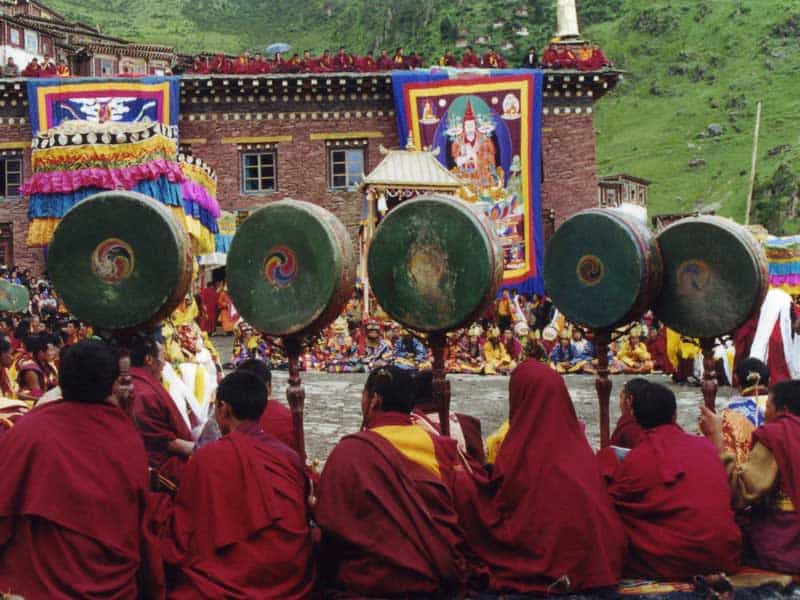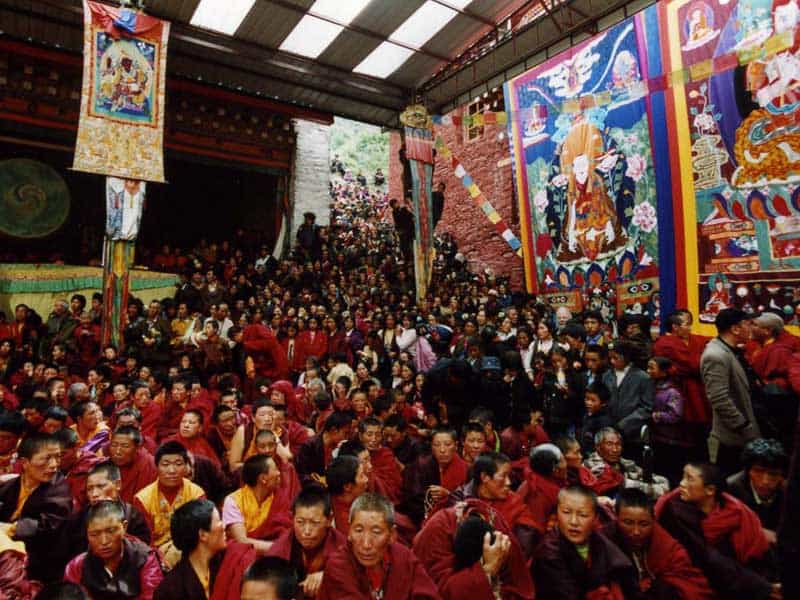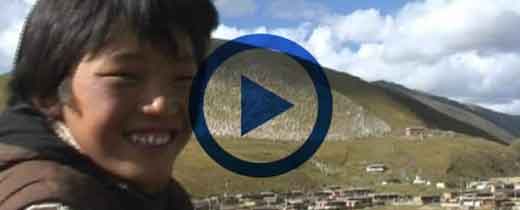Tibetan Festivals are interesting events that can be used for people to learn Tibetan life and culture. Tibetan festivals are either religious or folk traditions, and usually include rituals, farming events, commemorations, celebrations, or just entertainment. Origins of Tibetan festivals are strongly rooted in the religious beliefs of Tibetans, as well as their life.
Losar Festival- Tibetan New Year
During Losar festival, the house’s door are painted with religious symbols for tributes offered to a family shrine and a Gala dinner is carefully prepared. At night, torches are lit and people run and yell to banish evils away from their home. Before the sunrise of the New Year’s Day, housewives get the first bucket of water in the New Year and prepare breakfast. After sunrise, people dress up, open their doors to receive the blessing of “Tashi Delek.” Means “Happy New Yea”. Then, Tibetan go to monasteries to pray for a whole new year.
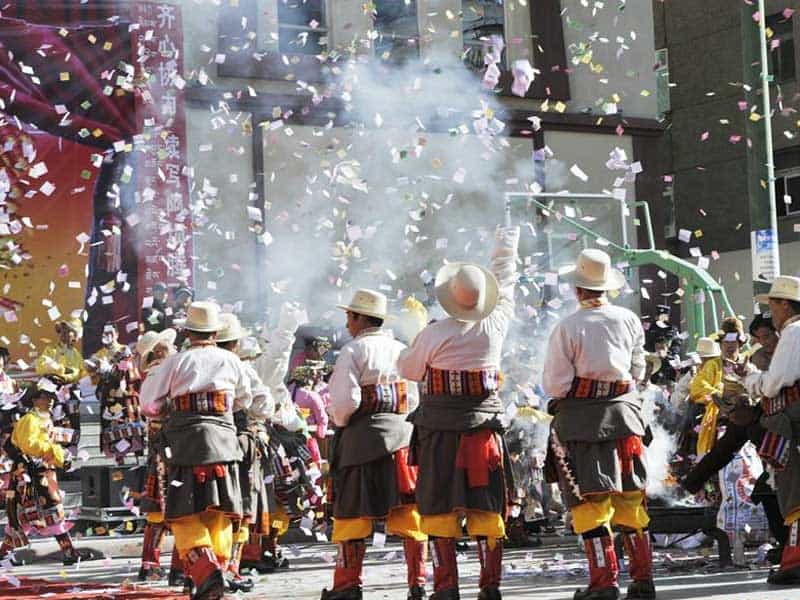

Tibetan Festivals — Banishing Evil
When this day comes, a sorcerer’s dance is performed in monasteries and a thorough house-cleaning is done in each house to banish misfortune, and also to prepare receiving the god’s blessing. At night, torches are lit and shouting is heard everywhere in a prayer for a new year without misfortune. This festival is usually to follow Losar festival.

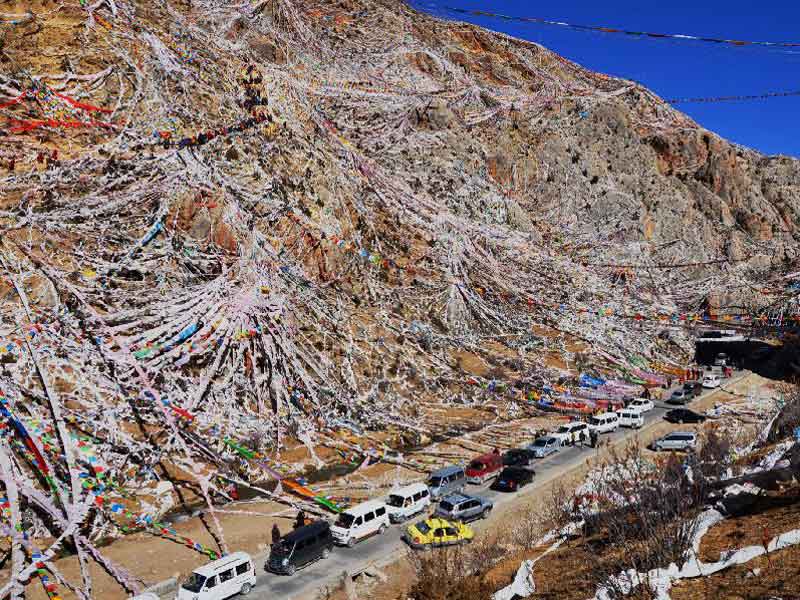
It has its origin in a prayer meeting organized at Jokhang Temple by Tsong Khapa whom was the founder of Gelukpa Sect of Tibetan Buddhism in 1409. ‘Monlam’ means ‘Prayer’. At monasteries a great Buddhist ceremony is held, one of the process is to have ‘Cham’ (Buddhist dances)
The date of the Great Prayer Festival (Mon-lam) varies annually.
- The three great Monasteries of Lhasa, it is from the 4th to the 25th of the first month when the monastery greets Maitreya.
- Ta’er monastery (“Ta’er” means “Kum-bum” in Tibetan, i.e., ten thousands images of Buddha), it is from the 8th to the 15th of the first month.
- Labrang Monastery, it is from the the 3rd to the 17th of the first month.
- The monasteries in Aba, it lasts for 15 days from January 1st to 15th of the Chinese Lunar Calendar. Thangkar unfolding usually happens on January 13th.
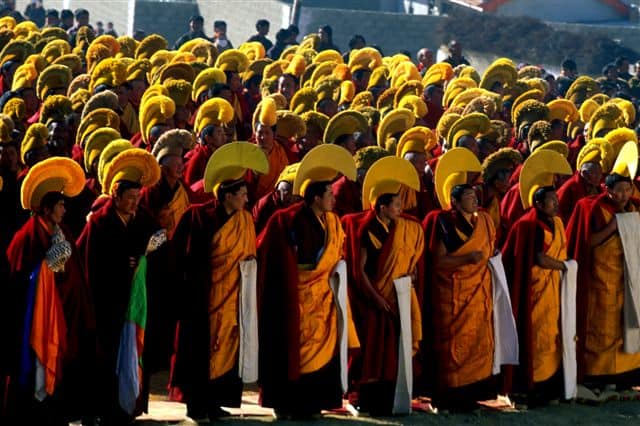
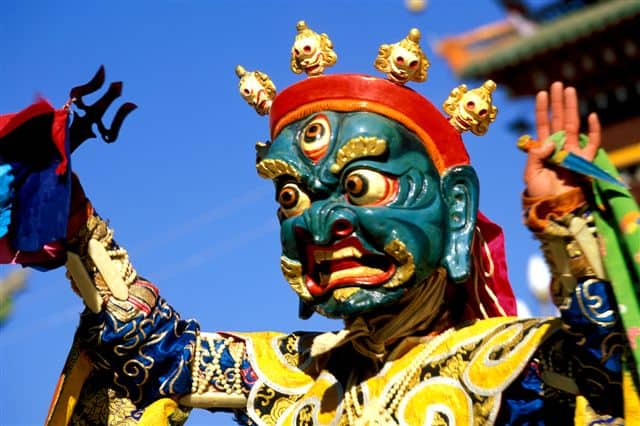
Saga Dawa Festival
April 15th is the day that Sakyamuni was born and nirvana on Tibetan calendar. It is the most important Buddhism festival across Tibetan Plateau. During this festival, People do not kill animals, and refrain from eating meat. Mt. Kailash is one of the most important places to celebrate this festival. During the festival, pilgrims raise a new flagpole to replace the old one at Tarboche in front of Kailash mountain. A Lama leads the ceremony and the flagpole is raised under his instructions. After the new flagpole is erected, Tibetans pray and throw ‘Wind-Horse-Flag’ (little pieces of colored material with Buddhist scriptures printed) into the air.
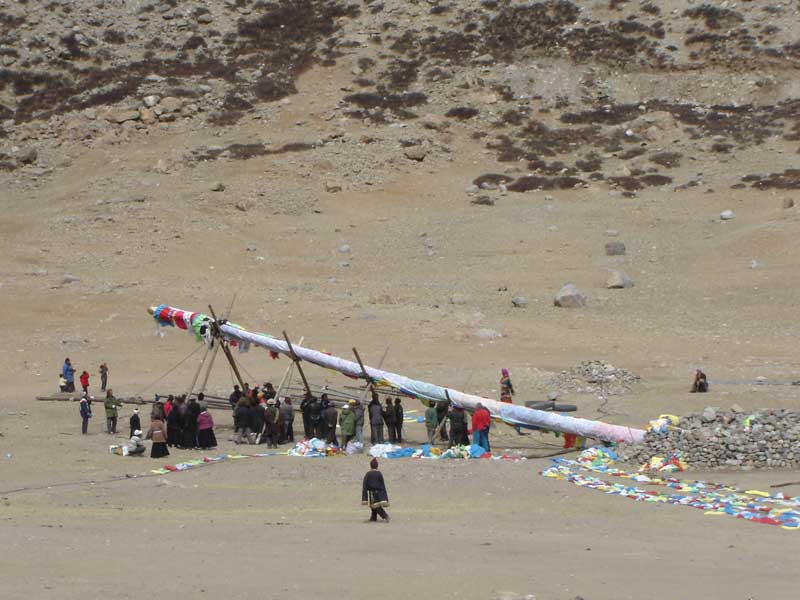
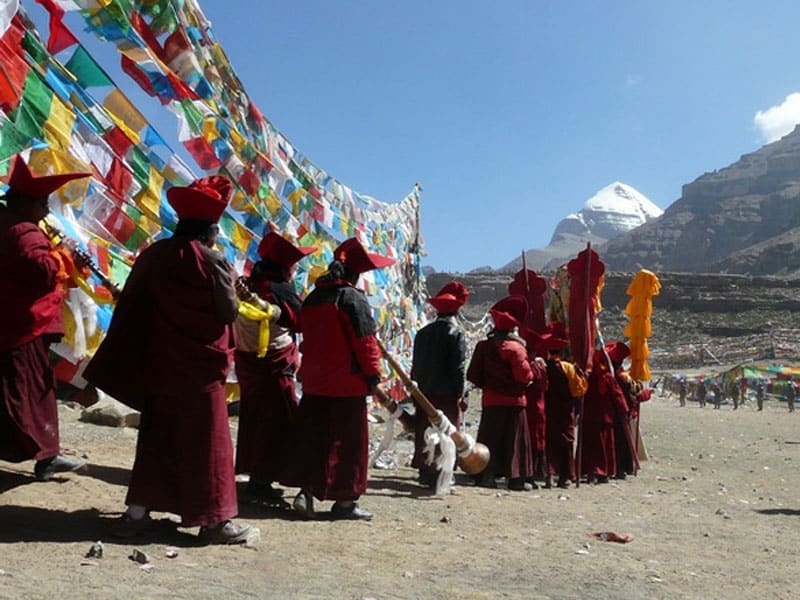
The Shoton Festival
In Tibetan, “Sho” means Yogurt, “Ton” means Party. Therefore, “Shoton festival” means “Party of Yogurt.” The 6th month of Tibetan calendar was for self-cultivation to monks, whom were required to remain in monasteries, or caves in order to complete the meditation. July 1st in the Tibetan calendar is the day to complete this holy cultivation, which is when local Tibetan bring yogurt to serve the monks after long time having no real meal. Since a large amount of yogurt was served as a meal and followed by entertainment of folk songs, daces the festival is titled, “Party of Yogurt” which in Tibetan is the “Shoton festival.”
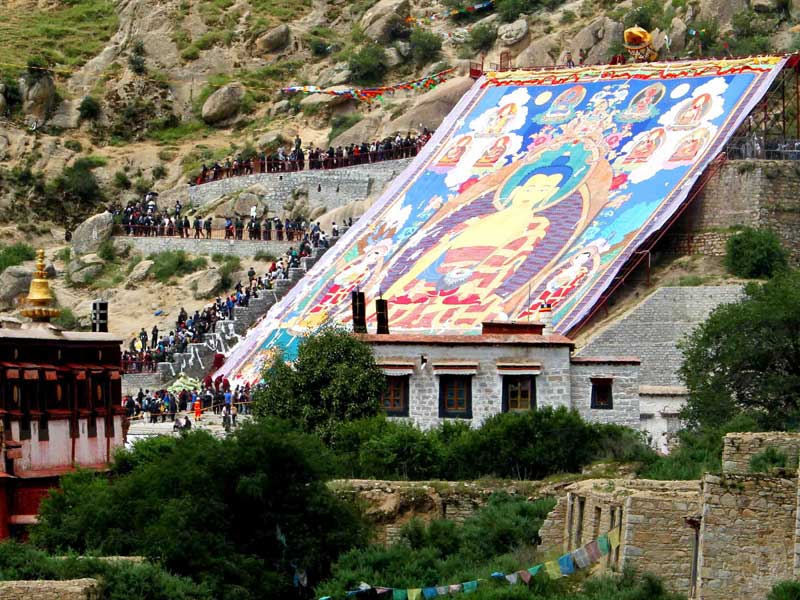
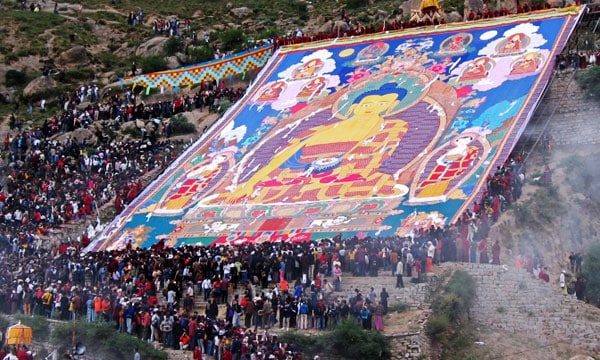
Tibetan Festivals – Katok festival
This festival usually lasts 3 days, and has been held in Katok Monastery since it was create. It is an important religious activity at the Katok Monastery that involving scripture chanting and praying. During this festival, Giant Thangkas of Amitayus, Sakyamuni and Maitreya are displayed on the mountains next to the monastery, and thousands of pilgrims come to the monastery to pay their homage to the Buddha and to accumulate merit.
